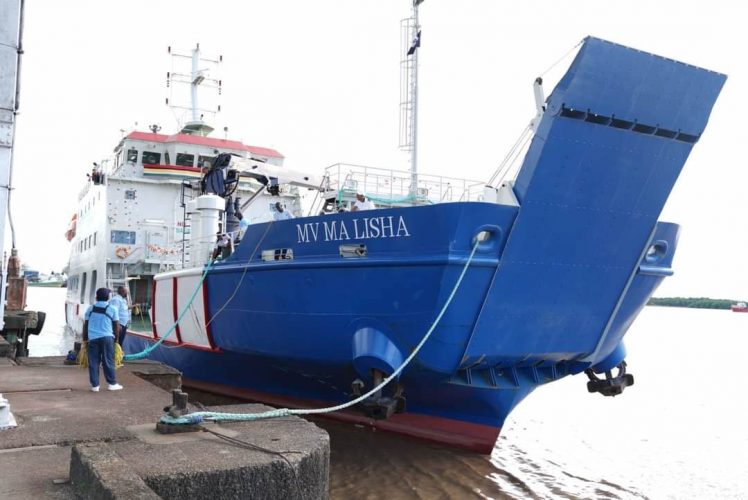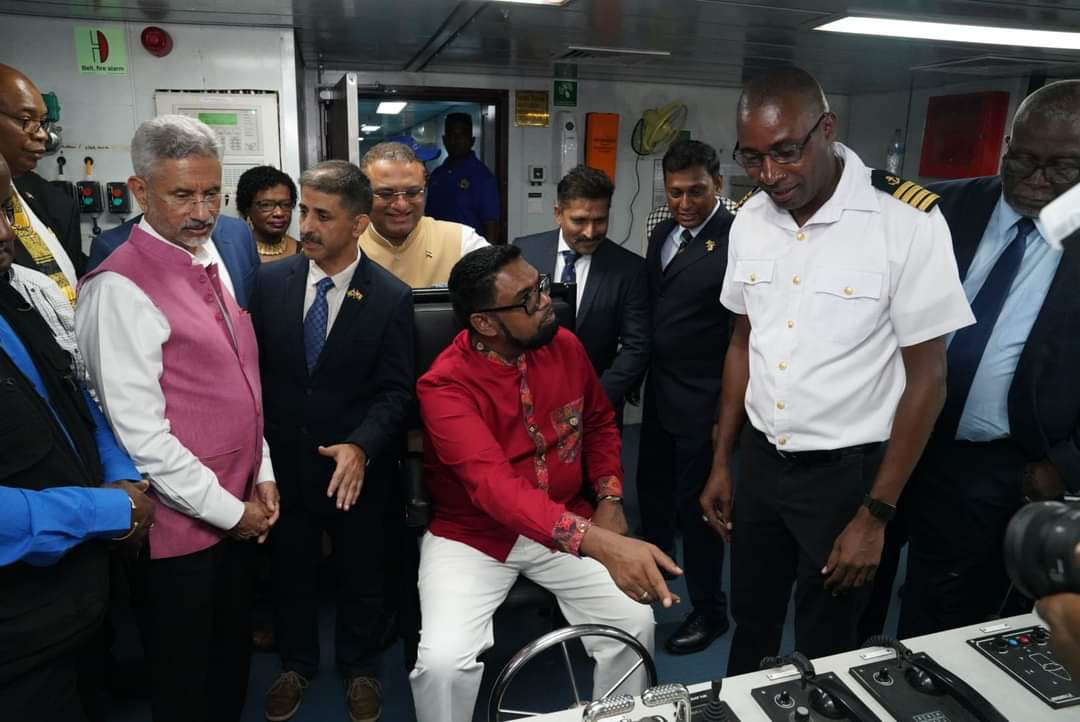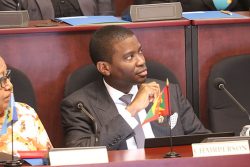President Irfaan Ali yesterday commissioned the MV Ma Lisha, a vessel which he said will play an integral role in allowing Region One (Barima-Waini) to be an important link connecting Guyana with Trinidad and Tobago, and open a pathway to increased food production and economic opportunities.
Guyana and India had signed a US$12.7 million contract for the 295 seats air-conditioned passenger and cargo ferry, which was eventually named MV Ma Lisha, a Warrau word that means friendship. It is expected to assist with the government’s macro policy of positioning Guyana as the mainstay in the regional food market.
According to the President, the newly commissioned vessel will serve the people of Region One, as well as assist with the modernisation of Guyana. One of the greatest hindrances in fast-tracking Guyana’s transition to food capital of the region is the transportation system. However, the President stressed that the vessel now opens up the opportunity for improved trade between Guyana and Trinidad and other countries in the Caribbean.

He pointed out that the vessel will travel between Region One and Trinidad, a journey of between 11 to 15 hours. This was important, he said, because Region One has the capacity to produce cassava, sweet potatoes, eddoes, yams, turmeric, ginger, and cage cultured fish that Trinidad and Tobago can utilise.
“This vessel opens up opportunities for food production, value-added food production, and economic opportunities for the people in Region One. We now have the transportation part of that link fixed,” Ali said, “we can now invest in the processing access so you can move more crab meat into Georgetown to supply hotels; supply the supermarkets. We can have ginger, turmeric brought down to the city to process for export. We can have provision ready for export and with the direct flight to the UK it opens up a new market for these products.”
Adding to this, Ali stressed that his government is currently spending more than US$5 million to upgrade the port facility at Port Kaituma to regional standards, which can then be utilised as a launching pad to ship directly into Trinidad where there is a highly developed manufacturing and processing industry. “What that does is that it now allows us to build logistics and supply capacity and capabilities in Region One, in the hinterland. It requires us now, once we move in that direction, to take government’s services into that region on a larger scale because as we build out Guyana, the centralisation of government services will be removed,” he added.
Meanwhile, the President revealed that the current operating cost of the two existing vessels is almost $12 million every month with 60% of the cost being for fuel. He described them as “unreliable, inefficient, served well… but in modern-day context could not do the job that is required.”
However, the new vessel is expected to use substantially less fuel than the MV Kimbia so the operating cost will be greatly reduced. “This will improve efficiency, reliability, and reduce our cost centre while at the same time bringing a higher level of service to the people of these regions,” Ali said.
He further divulged that it was under former president Donald Ramoutar that an agreement was discussed and signed for the building of the vessel with India. However, after returning to government he learned that “for five years or most of that five years the policymakers at that time was trying to convince the authorities in India that we should give the highest bidder to build the ship, the highest bidder…”
Ali said they were able to renegotiate with the lowest bidder who built the ship and “got every single feature the highest bidder was offering.”
Touching on the importance of friendships between countries, Ali said that India and Guyana share a very special relationship with the governments seeing the development of the people of both countries as a priority. “The relationship between India and Guyana is spanning different sectors and different opportunities that are important and critical for both countries,” he added.
Meanwhile, India’s Minister of External Affairs Dr S Jaishankar said that the passenger and cargo ferry itself was a testimony of the close friendship between the two countries. “It is designed and built by a premier Indian government undertaking, the Garden Reach Shipbuilders and Engineers Limited,” he said
He pointed out that despite the challenges as a result of Covid-19, the ferry was still delivered on time.






